Oita International Wheelchair Marathon
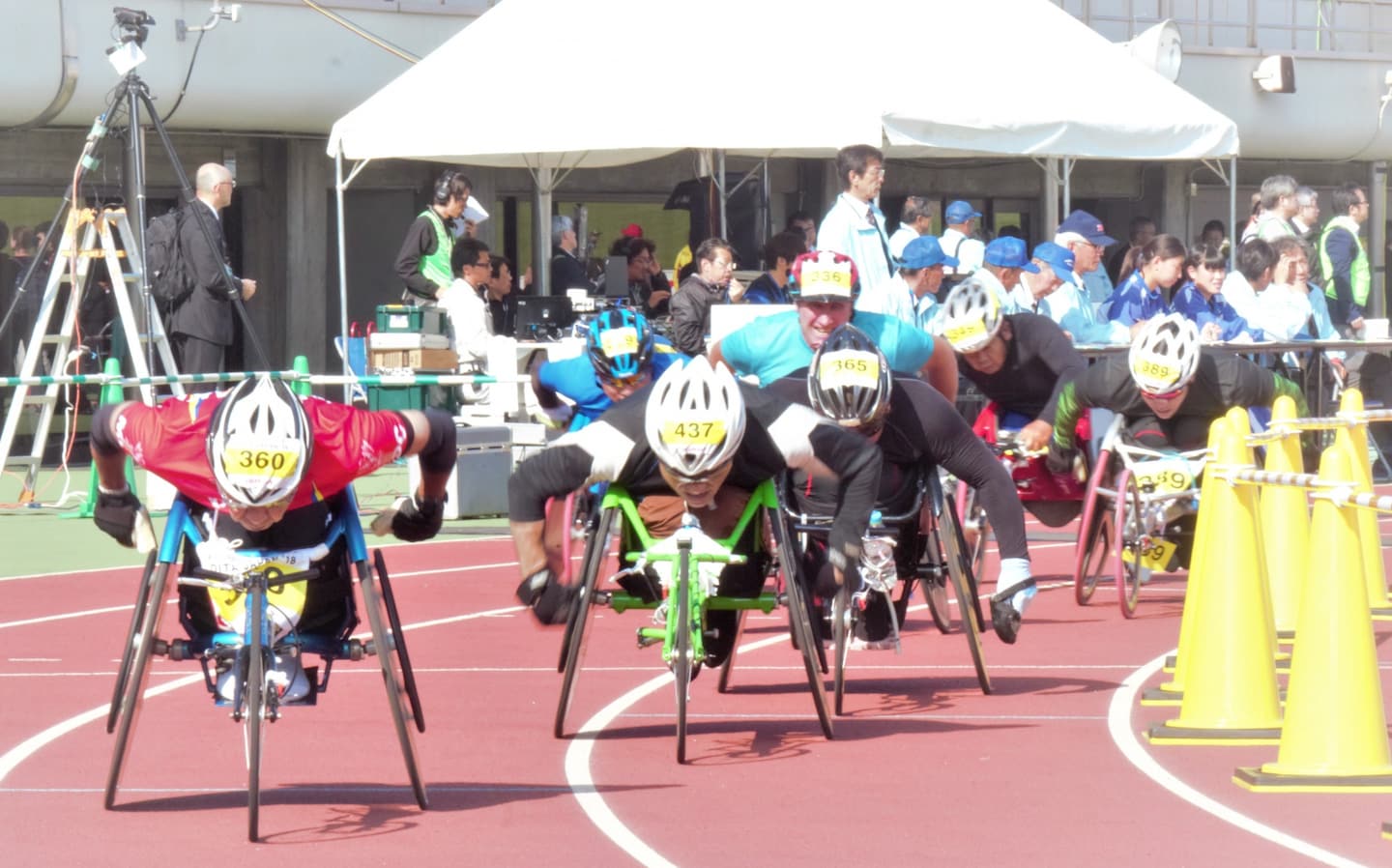
The Oita International Wheelchair Marathon was first held in 1981, at the time it was the world’s first international marathon event exclusively for wheelchair users. In November this relaxed city, famous for its steaming hot springs, becomes the venue for half and full wheelchair marathons that attract athletes from across Japan and the world.
By Chiara TerzuoloTime to Race!
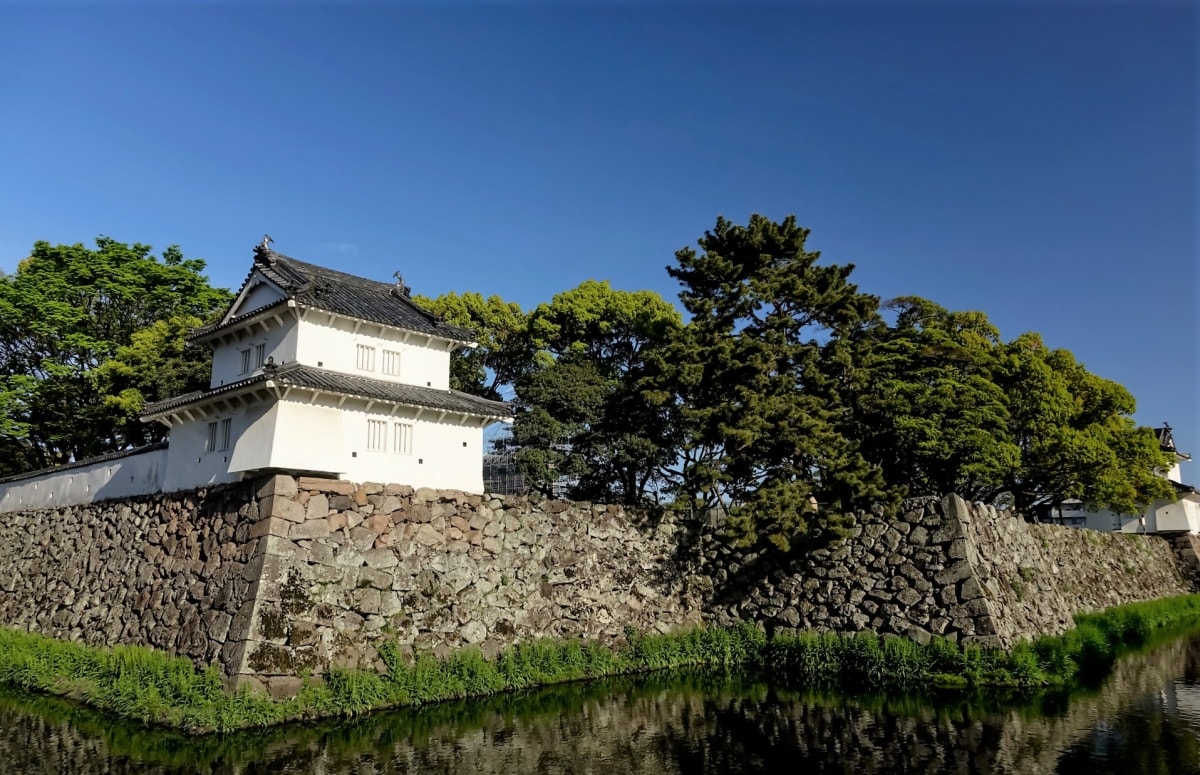
Waking up bright and early on November 18, 2018, the sunny skies, cool breeze and pleasant weather boded well for a day of sightseeing in Oita City (read more about the time we had exploring incredible sights around town here).
But descending into the hotel lobby, it was clear that something was afoot. From the broad picture windows I could see athletes clad in warmups pushing their racing wheelchairs—known as racers—as they headed out to sign in for the day's main event: the Oita International Wheelchair Marathon.
Currently in its 38th iteration, this popular race has been a regular event in the Oita social calendar, with a phalanx of experienced volunteers and local supporters coming out to cheer on the athletes as they fly through the city at speeds of 40 kilometers per hour (or more!)
As the start time approached, excitement started to mount. The athletes lined up by category right near the Funaijo Castle Ruins, which provided a stunning backdrop that the sleek racers, totally focused on the road ahead, didn't seem to notice.
The starter gun went off and the full marathon competitors shot off in a blur, followed three minutes later by the half marathoners, vociferously cheered on by local schoolchildren and spectators. The sudden burst of speed is almost shocking, much faster and smoother than the footrace version of the same event.
An Accessible City
As a former marathon runner myself, the appeal of Oita as a race destination is clear. Although surrounded by mountains, the city itself and the roads along the marathon course are perfectly maintained. For this reason Oita is known as a "speed course," where athletes can ramp up to high speeds and post record times.
Walking along the course following the athletes who are already fading into the distance, I noticed that at crosswalks the edges of the sidewalks have been carefully leveled down to the road, so that people getting around in wheelchairs (or bikes) can smoothly get around without damaging the wheels. This is just one of the touches that have gone into making the city more accessible for all.
Thundering Speed and Lightening Fast Races
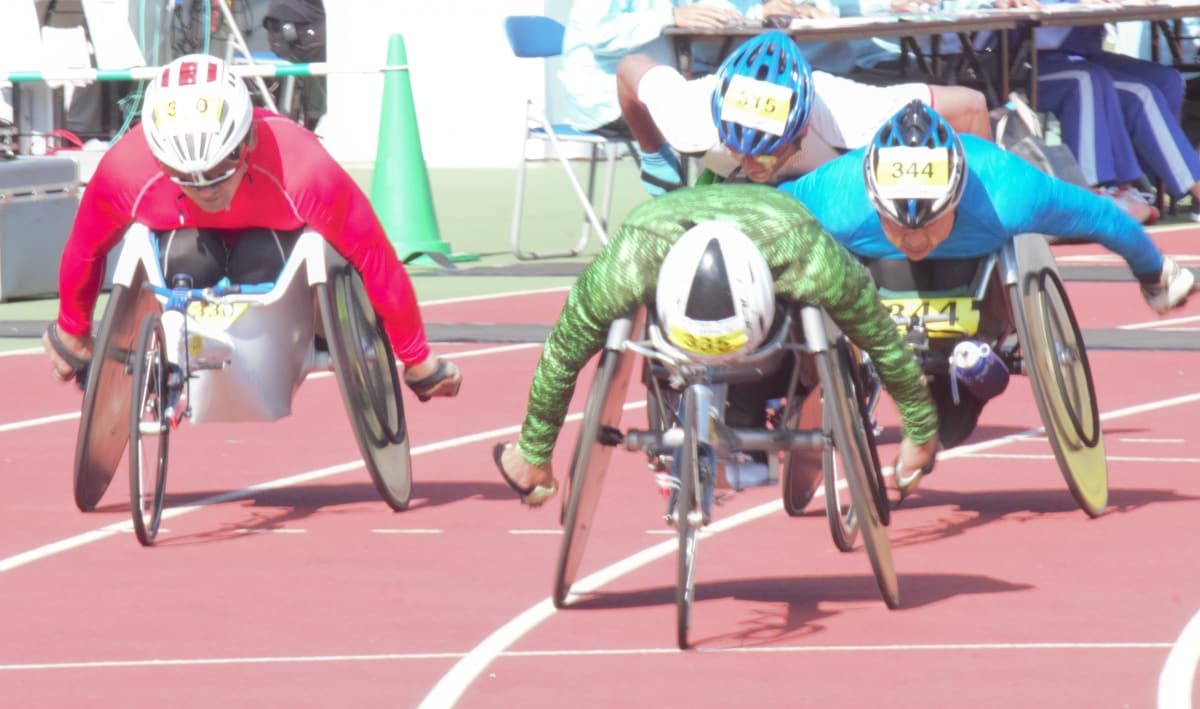
Anyone who has watched a marathon run on foot may well be surprised by how quickly wheelchair racers tear through the course. As I rushed to the finish line at the Oita Athletic Stadium, the athletes were picking up speed and jostling for position along the roads and famously tough bridges around the city.
The riverside stadium was filled with fans and supporters, who eagerly awaited the arrival of the first group of half-marathon competitors. They don't have to wait long, as soon a tight group of eight streaks into the stadium. They circle the track once, arms flying as each tried to overtake the others to lead the pack. The thrilling photo finish victory of the men's T34/53/54 class went to Tsuyoshi Hyakutake of Japan with a time of 0:46:11, followed only one second later by Chen Mantang of China.
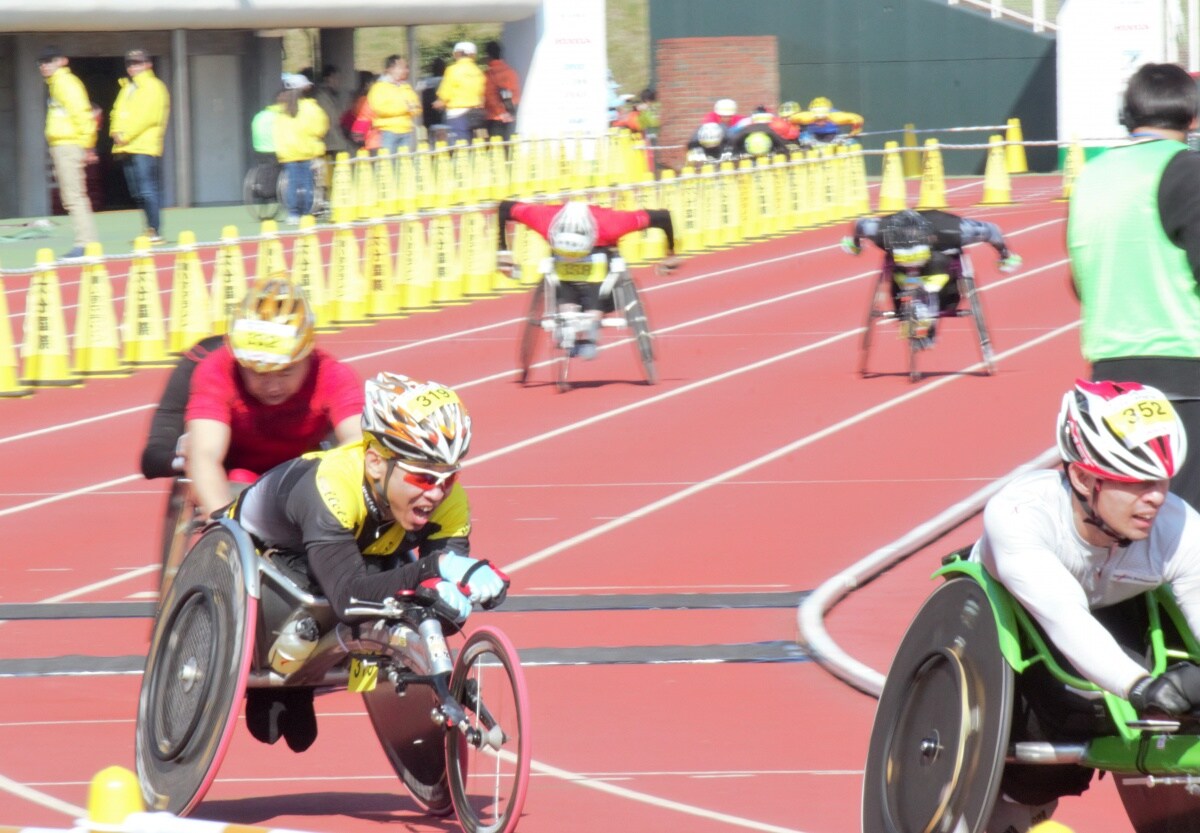
After the first group slows and heads off for some well-deserved rest, more and more competitors speeded into the stadium. A loud cheer accompanied Kazumi Nakayama, who took first place for the women's T34/53/54 race with an impressive time of 0:52:59, not far off the current world record of 0:49:49.
As each racer came in, he or she was welcomed back by a volunteer, who helped clip off race tags and wheel the (understandably weary) athletes towards the rest area. International competitors are also assigned a translator, to ensure there are no issues due to language barriers.
The crowds continued to cheer as another competitor from Japan, Akikazu Noda, took first place in the men's T33/52 half marathon, later followed by Yuka Kiyama from the women's divison. Shinya Kiyota gave a last burst of power to take gold in the men's T51 division with a time of 1:24:48.
Full Marathoners Incoming!
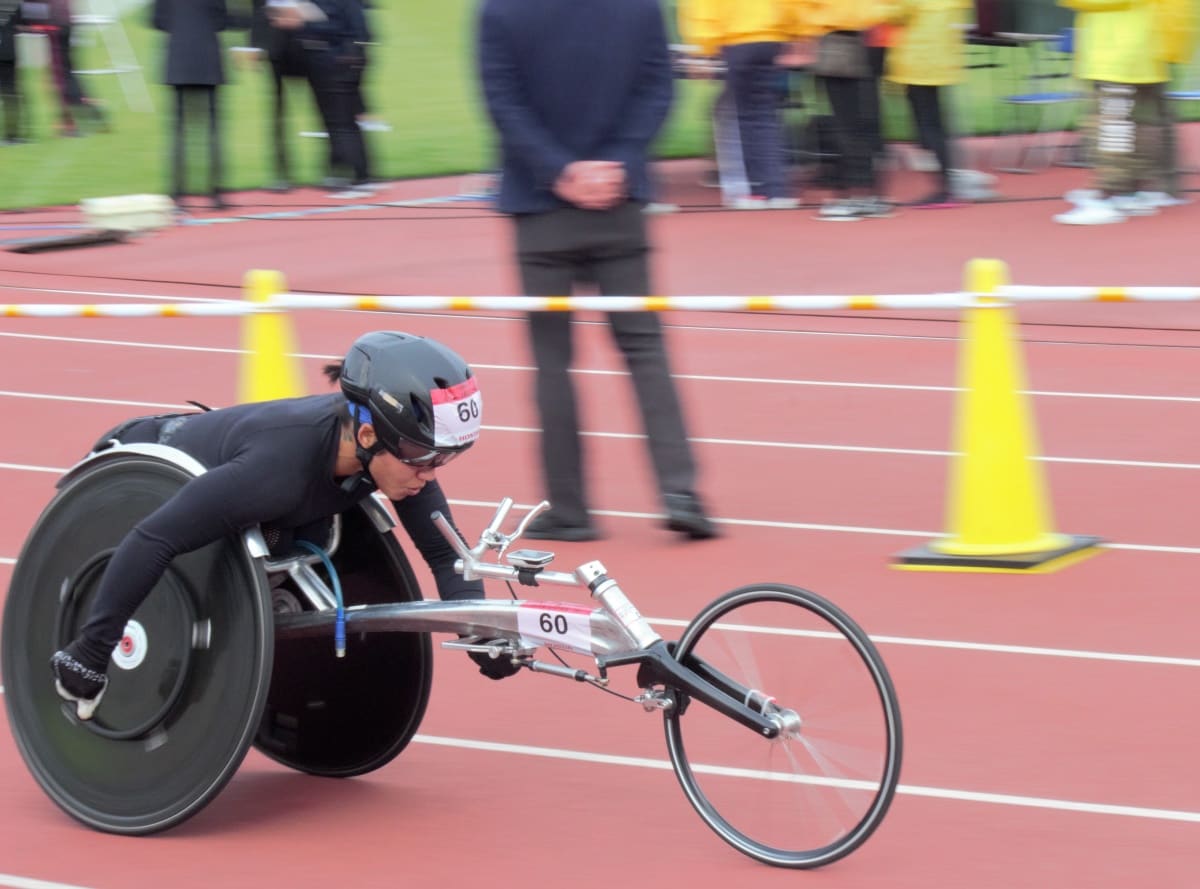
As the half marathoners continued to cross the finish line, suddenly a pack of nine racers entered the stadium at high speed: the top contenders for the full marathon!
Wheels flew and family members in the stands shouted out encouragement as the athletes battled to another photo finish. Swiss Paralympian Marcel Hug took the laurels for the T34/53/54 race with a time of 1:23:59, making this his seventh victory in Oita. Just one second behind were Tomoki Suzuki of Japan and Byunghoon Yoo of Korea. For the women's T34/53/54, rising star Tsubasa Kina came in strong with a time of 1:39:36, her second win in a row at Oita.
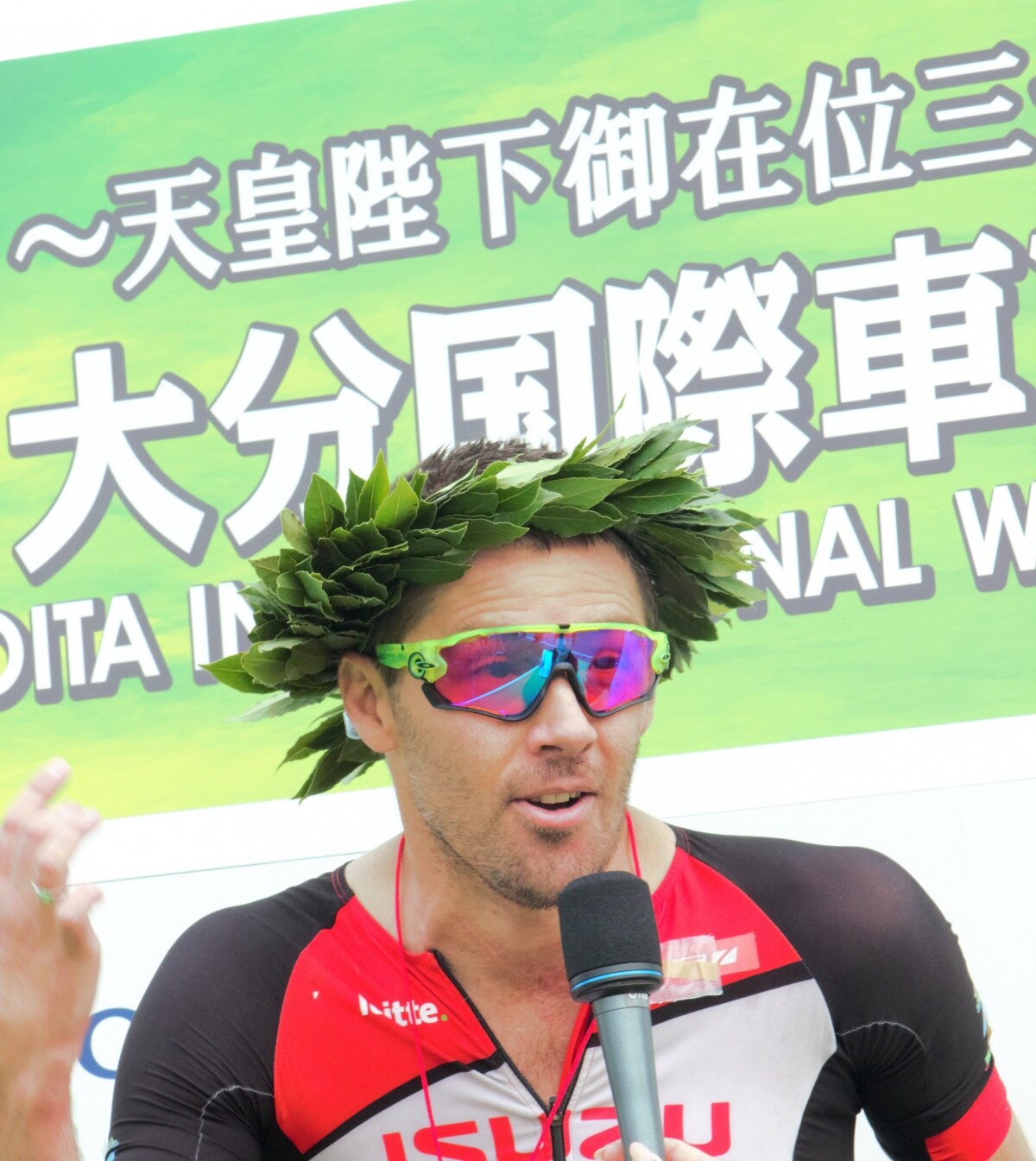
The men's T33/52 race was once again led by Japanese competitors, with Tomoki Sato coming in first with a time of 1:47:57, while South African Pieter Du Preez chalked up his second victory in a row in Oita with a time of 2:37:06.
Exploring Oita
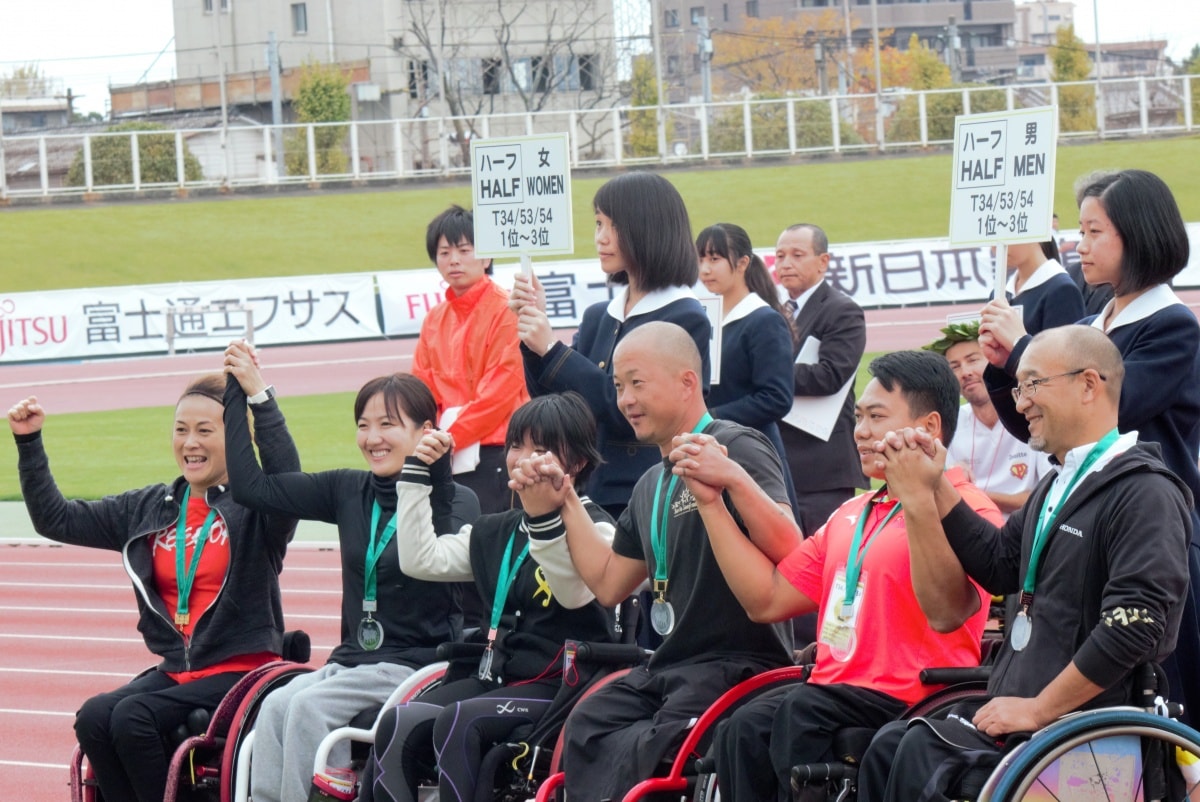
After the closing ceremony, there was still time to take in a few of the sights in Oita before trotting off to catch my plane... or, in the case of the athletes, have a well-deserved nap!
You can check out the ruins of Funaijo Castle which are particularly pretty after dark, when the artistic rendition of the castle is lit up. The Oita Prefectural Art Museum has rotating exhibits for art fiends, and be sure to say hello to the cute elephant statue in front of the nearby Oita Art Museum.
Those who are feeling a bit peckish should head to the Machinaka covered shopping arcades, where tons of restaurants await to satisy your cravings, many of which are also wheelchair accessible. Shop around for gifts or snacks, and keep an eye out for a little corner shop where you can taste the local sake and shochu!
Oita was selected as one of the host cities for the 2019 Rugby World Cup, and as such is preparing to welcome visitors from all over the world. With their experience in creating barrier-free experiences for locals and visiting athletes, the Japan National Tourism Organization wants to showcase this welcoming city as an example for other areas to follow.
A visit to Oita proves that creating cities that are friendly to people with disabilities only makes it a more lively place to live (and visit!)
Editor's Note
This article was written in cooperation with the Japan National Tourism Organization and the Tokyo Organizing Committee of the Olympic & Paralympic Games.



